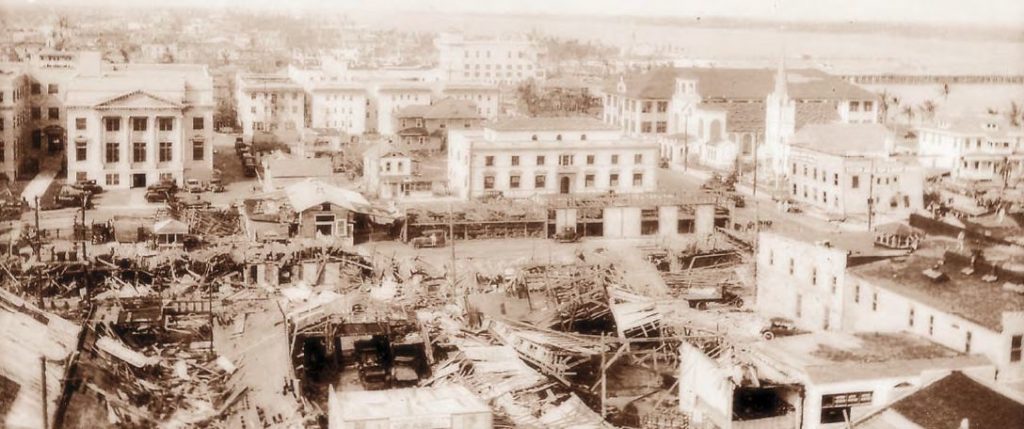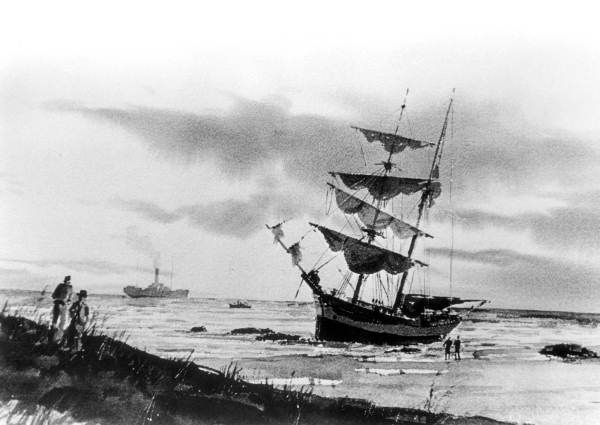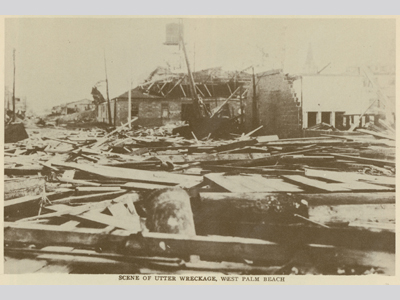
Historic Palm Beach County: Fascinating Stories Your Neighbors Don't Know (Part 1)
Think you know Palm Beach County? Think again. Behind every street name, every landmark, and every community celebration lies a story that most neighbors have never heard. From shipwrecked coconuts that accidentally named our most famous island to legendary outlaws who terrorized South Florida from Everglades hideouts, our county's past is filled with drama, adventure, and fascinating characters.
Palm Beach County's history isn't just dates and facts in a textbook — it's tales of brave mail carriers walking 68 miles barefoot along the beach, devastating hurricanes that changed the landscape forever, and pioneers who built communities from nothing but swampland and determination. These stories shaped the place we call home today, yet they remain hidden in old newspapers, museum archives, and the memories of longtime residents.
We've dug into historical records, talked to local historians, and explored the archives to bring you the incredible true stories that defined our county. These aren't just interesting historical tidbits — they're the foundation of the communities we live in, work in, and raise our families in today.
Get ready to see Palm Beach County through new eyes. Here are four fascinating historical stories that will make you appreciate where you live even more!

1. The Providencia Shipwreck: How 20,000 Coconuts Named Palm Beach (1878)
📅 Year: January 9, 1878
📍 Location: Off the coast of what is now Palm Beach
💡 Historical Significance: Named Palm Beach and started the iconic coconut palm landscape
Here's a fact that will blow your mind: The iconic coconut palms that define Palm Beach and give it its world-famous name? They're not native to Florida. They came from a shipwreck.
In January 1878, a Spanish brig called the Providencia was sailing from Havana, Cuba to Spain with a cargo of 20,000 Trinidadian coconuts when it ran aground just offshore of a sparsely populated barrier island in the Lake Worth region. At the time, there was no "Palm Beach" — just a nameless island that was part of an area settlers called "Lake Worth Country."
Local pioneers and settlers salvaged the coconuts from the wreck. After eating their fill (imagine having thousands of fresh coconuts!), they planted the rest all along the coastline. Within a decade, coconut palms were sprouting everywhere, transforming the landscape. The island became so associated with these towering palms that it earned the name "Palm Beach."
🌴 What Makes This Special: Without this shipwreck, Palm Beach might have a completely different name and certainly a different look. The coconut palms became so synonymous with luxury, tropical paradise, and Florida living that they shaped the entire identity of one of America's most famous resort destinations. Henry Flagler himself fell in love with the lush grove of coconut palms when he arrived in the 1890s — those same palms from the Providencia shipwreck.
🏝️ Modern Connection: Today, coconut palms line streets, beaches, and properties throughout Palm Beach County. They're protected landmarks in many areas, and their silhouette is instantly recognizable in photos, postcards, and marketing materials promoting Palm Beach's tropical elegance. Every time you see those iconic palms swaying in the breeze, you're looking at the descendants of 20,000 coconuts that washed ashore from a Spanish shipwreck over 145 years ago.
The next time someone asks where Palm Beach got its name, you can tell them it wasn't planned by developers or chosen by city founders — it was an accident of fate, courtesy of a shipwrecked cargo and resourceful pioneers who turned disaster into one of Florida's most valuable assets.

2. The Ashley Gang: South Florida's Most Notorious Outlaws (1915-1924)
📅 Years Active: 1915-1924
📍 Territory: Palm Beach County Everglades, Stuart, West Palm Beach
💡 Historical Significance: Called "the greatest threat to Florida since the Seminole Wars"
Long before Miami Vice, Palm Beach County had its own criminal empire operating right in your backyard. The Ashley Gang — led by John Ashley, the self-styled "King of the Everglades" — terrorized South Florida for nearly 13 years, robbing over 40 banks, hijacking rum shipments during Prohibition, and murdering law enforcement officers who got in their way.
The gang operated from hidden camps deep in the Florida Everglades near what's now Hobe Sound and Gomez (just north of Hobe Sound in modern-day Martin County, which was carved out of Palm Beach County in 1925). John Ashley's father, Joe, had moved the family to West Palm Beach in 1911 and even briefly served as a lawman before turning to moonshining. The family taught their sons how to trap otters and hunt alligators in the Everglades, skills that later helped them evade capture for years.
John Ashley first came to law enforcement's attention after the murder of Seminole trapper DeSoto Tiger in 1911. When Palm Beach County Sheriff George Baker sent deputies to arrest him at his swamp camp, Ashley ambushed them and sent them back with a message: "Tell Sheriff Baker not to send any more chicken-hearted men or they might get hurt." That boldness set the tone for a decade-long feud.
🏴☠️ Legendary Exploits: The gang robbed their first major target in 1915 — a bank in Stuart, making off with between $4,300 and $45,000 depending on which account you believe. During the getaway, John Ashley was accidentally shot in the jaw by gang member Kid Lowe, losing sight in one eye. He wore a glass eye from then on, becoming instantly recognizable. Between 1915 and 1924, they robbed nearly $1 million from at least 40 banks. They also hijacked so many rum shipments during Prohibition that rum-running on the Florida coast virtually stopped while they were active. They even raided the British Crown colony at West End in the Bahamas — the first American pirates to attack a British colony in over a century.
⚖️ The Dramatic End: On November 1, 1924, John Ashley and three gang members were caught at the Sebastian River Bridge (between modern Fort Pierce and Sebastian). Sheriff Bob Baker — son of the original Sheriff George Baker who had pursued Ashley for years — helped organize the operation. The four outlaws were captured alive, but all four turned up dead. The official story was they tried to escape. Decades later, a deputy who had been there confided the truth to local historian Ada Williams: it was an execution, not a shootout. Their deaths marked the end of the Ashley Gang era and frontier justice in South Florida.
Among poor Florida "crackers" of the era, Ashley was considered a folk hero who represented resistance to bankers, lawmen, and wealthy landowners. Newspapers compared him to Jesse James. The Ashley Gang's story remains one of the most dramatic chapters in Palm Beach County history — a reminder that our county's past was far wilder than most people realize.
3. The Barefoot Mailman: Walking 68 Miles Through Paradise (1885-1893)
📅 Years Active: 1885-1893
📍 Route: Palm Beach/Hypoluxo to Miami (68 miles each way)
💡 Historical Significance: First regular mail service connecting Palm Beach to Miami
Imagine walking 68 miles along the beach — barefoot — carrying a heavy mail sack, crossing alligator-infested waters, sleeping in primitive shelters, and doing it all over again every single week for $600 a year. That was the job description for South Florida's most legendary mail carriers.
Before there was Palm Beach as we know it today, before there were roads or railroads connecting settlements, the U.S. Postal Service reactivated Star Route 6451 in December 1884. This route connected the Lake Worth area (modern Palm Beach County) to Miami, and it required mail carriers to walk approximately 40 miles on foot and travel 28 miles by boat — a 136-mile round trip that took six days every single week.
The first barefoot mailman was Edwin Ruthven Bradley, a retired Chicago newsman who won the postal contract along with his son Louie. They took turns walking the route, but after two years, they'd had enough. At least 20 men served as carriers over the seven-year existence of the route, and here's the kicker: in the entire seven-year history, no mail carrier ever attempted to renew their contract. That tells you everything about how brutal this job was.
📬 The Weekly Journey: The mailman would start Monday morning in Hypoluxo (or Palm Beach in the early years), sail down Lake Worth, then walk south along the beach. He'd spend Monday night at the Orange Grove House of Refuge in what's now Delray Beach. Tuesday, he'd walk 25 miles and cross Hillsboro Inlet by rowboat, spending the night at Fort Lauderdale's New River House of Refuge. Wednesday, he'd reach Miami, deliver the mail, and sleep before starting the return journey Thursday. By Saturday afternoon, he'd be back home, exhausted, having walked approximately 80 miles and traveled 56 miles by boat — all to deliver letters and packages.
They were called "beach walkers" or "beach walkists" at the time. The term "barefoot mailman" didn't appear until the 1940s, popularized by artist Stevan Dohanos who painted six murals depicting the mail carriers for the West Palm Beach Post Office (you can still see them in the current West Palm Beach Post Office). The carriers walked barefoot because it was easier on the hard-packed sand at the ocean's edge. Shirts off, shoes off, sometimes even trousers off — everything stuffed into their haversack along with the mail. The U.S. Postal Service made a special concession for these carriers, allowing them to use lightweight canvas mail sacks instead of the standard heavy cowhide sacks used everywhere else in America.
⚠️ The Tragic Mystery: The most famous barefoot mailman was James Edward Hamilton, who disappeared in October 1887 at Hillsboro Inlet. His clothes and belongings were found on the north bank, but Hamilton was never seen again. It's believed he drowned while swimming across the inlet to retrieve his boat, which had mysteriously moved from where he'd left it. Some speculate he was attacked by alligators or sharks. A statue memorializing Hamilton now stands at Hillsboro Inlet, and his story became the subject of a 1943 novel and 1951 Hollywood movie starring Robert Cummings.
The barefoot mail route ended in January 1893 when a road was completed from Lantana to Lemon City (north Miami), signaling the official end of the Pioneer Era and the beginning of Henry Flagler's development boom. Today, the South Florida Council of Boy Scouts sponsors an annual 35-mile, 2-day hike along portions of the original barefoot mailman trails, keeping the legend alive for new generations.

4. The 1928 Okeechobee Hurricane: The Storm That Changed Everything
📅 Date: September 16-17, 1928
📍 Impact Area: Entire Palm Beach County, especially West Palm Beach and Lake Okeechobee communities
💡 Historical Significance: Second-deadliest hurricane in U.S. history, led to construction of Herbert Hoover Dike
The Roaring Twenties were in full swing across Palm Beach County. West Palm Beach's population had quadrupled from 1920 to 1927, hotels and theaters were booming, and the farming and sugar businesses in the Glades were thriving. Then came September 16, 1928 — the day one of the most devastating natural disasters in American history struck Palm Beach County.
The hurricane — known as the Okeechobee Hurricane or San Felipe-Okeechobee Hurricane — made landfall near West Palm Beach as a Category 4 storm with sustained winds estimated at 145 mph and gusts potentially reaching 160 mph. In West Palm Beach alone, the storm destroyed 1,711 homes, damaged 6,369 homes, destroyed 268 businesses, and damaged 490 businesses. At least 10 inches of rainfall pounded the city.
But the worst devastation occurred around Lake Okeechobee. The hurricane's winds pushed water from the lake inland, creating a massive storm surge that inundated communities including Belle Glade, Pahokee, and South Bay. Hundreds of square miles flooded, with some areas reporting water depths up to 20 feet. Numerous houses were swept away and destroyed as they crashed into other obstacles. The death toll was catastrophic — estimates range from 2,500 to 3,000 deaths, making it the second-deadliest hurricane in U.S. history (after the 1900 Galveston hurricane).
💔 The Human Toll: A survey throughout the county reported 552 businesses destroyed, 1,447 businesses damaged, 3,584 homes destroyed, and 11,409 homes damaged — and these figures didn't even include cities like Boca Raton, Greenacres, Lantana, and South Palm Beach. Governor John W. Martin estimated that 15,000 families were left homeless in Palm Beach County. Damage in South Florida totaled approximately $25 million in 1928 dollars — equivalent to hundreds of millions today. Many victims around Lake Okeechobee were migrant farm workers, and their deaths were often unreported or undercounted, meaning the true death toll may never be known.
🏗️ The Silver Lining: The 1928 hurricane led directly to the construction of the Herbert Hoover Dike around Lake Okeechobee. Construction began in 1932 and continued for decades, creating a massive levee system designed to prevent storm surge from the lake from ever flooding surrounding communities again. The dike — over 140 miles long — fundamentally changed the landscape and hydrology of South Florida. It also prompted better hurricane forecasting, early warning systems, and building codes throughout Florida. The storm was so powerful and its impact so profound that it changed the Glades forever, influencing everything from water management to land development to disaster preparedness.
Today, when you drive around Lake Okeechobee or hear about water management debates, you're seeing the direct legacy of the 1928 hurricane. The storm shattered the boom-era optimism of the 1920s but also taught Palm Beach County residents the respect and preparation that living in hurricane-prone South Florida requires. Every hurricane season, every evacuation plan, every weather warning system — they all trace back to the lessons learned on that terrible September day when nature reminded everyone that paradise comes with risks.
History Lives Right Here in Your Backyard
From shipwrecked coconuts that accidentally named one of America's most famous destinations to outlaws who terrorized the Everglades, from heroic mail carriers walking barefoot through paradise to devastating hurricanes that reshaped the landscape — Palm Beach County's history is anything but boring. These aren't just old stories — they're the foundation of the communities we call home today.
This is just Part 1 of our historical journey! We're uncovering even more fascinating stories that your neighbors don't know — from Henry Flagler's transformation of Palm Beach into America's first resort destination to the pioneer families who carved communities out of wilderness, and the events that shaped everything from street names to local traditions. Stay tuned for more incredible tales from our county's rich past.
🌴 Looking for More Local Businesses?
Discover 38,000+ local businesses across Palm Beach County on South Florida Locals — your trusted directory for restaurants, services, shopping, and more.
Follow us on Instagram @mypalmbeachlocals for daily local recommendations, hidden gems, and what's happening in your neighborhood!
📚 We want to hear from you!
Do you know any fascinating historical stories about Palm Beach County? Did your family experience any of these historic events? Reply to this article or tag us on Instagram — sharing local history helps keep these incredible stories alive!
— The Palm Beach Locals Team
Palm Beach Locals Newsletter
Your trusted guide to the best of Palm Beach County
📧 [email protected]
🌐 mypalmbeachlocals.com
📱 @mypalmbeachlocals